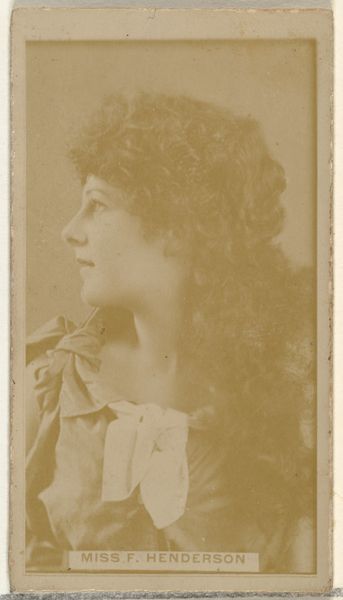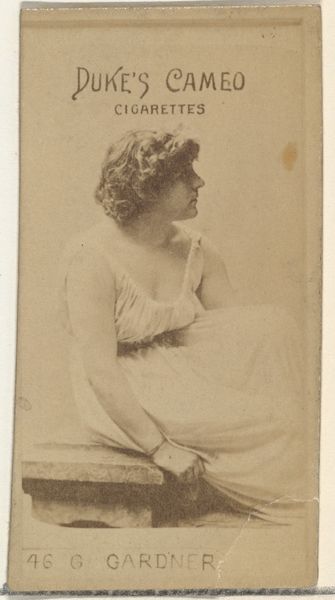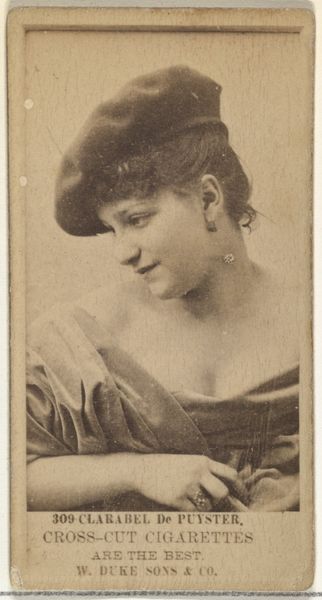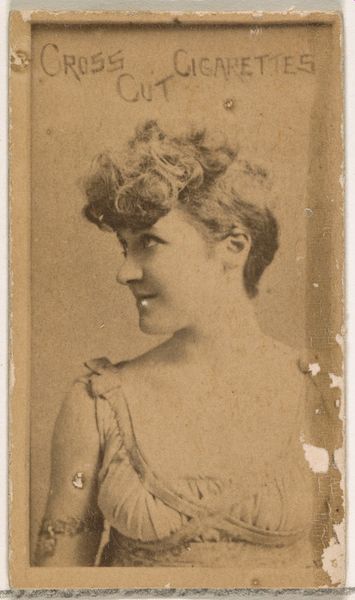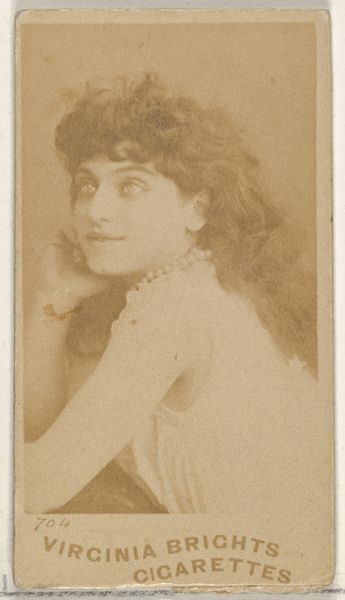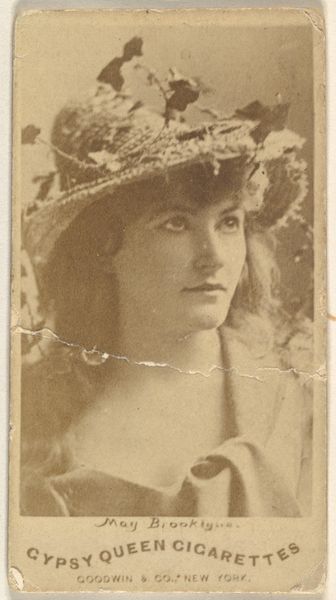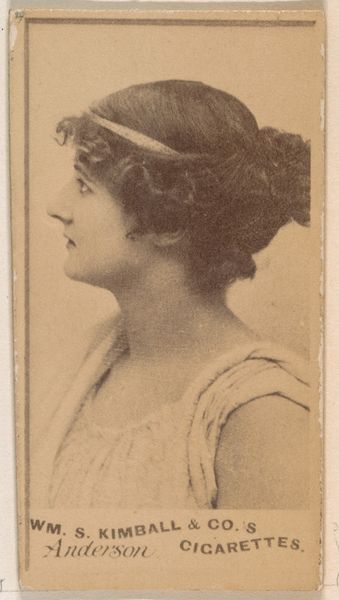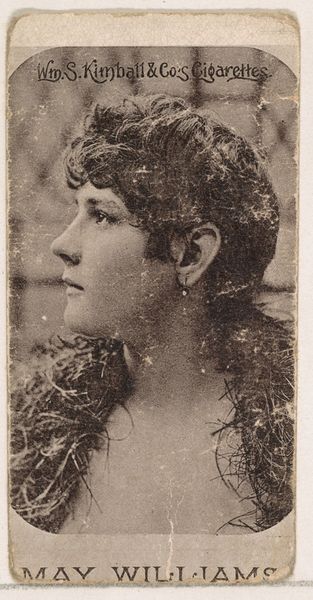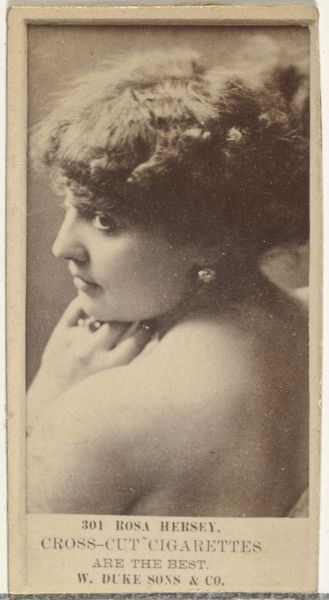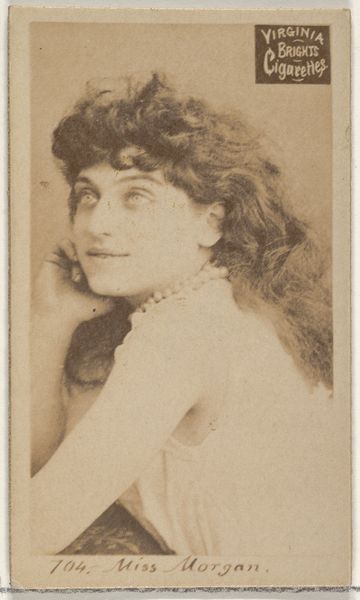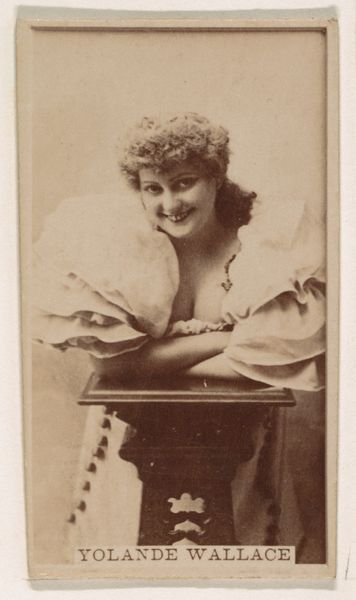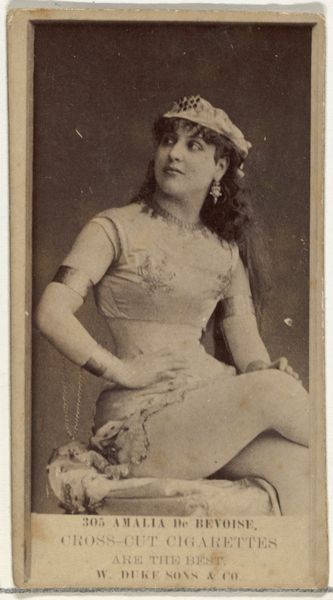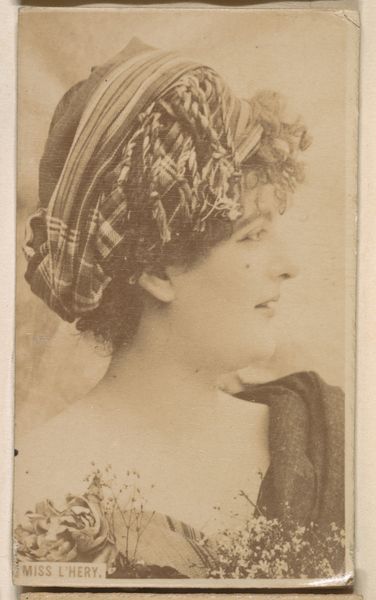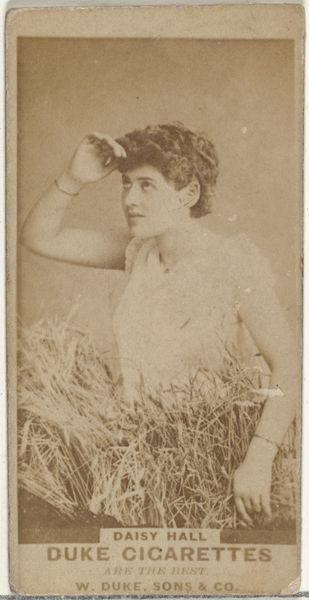
Card Number 6, Lilly Post, from the Actors and Actresses series (N145-1) issued by Duke Sons & Co. to promote Cross Cut Cigarettes 1880s
0:00
0:00
drawing, print, photography, albumen-print
#
portrait
#
drawing
#
toned paper
#
pictorialism
# print
#
charcoal drawing
#
figuration
#
photography
#
coloured pencil
#
albumen-print
Dimensions: Sheet: 2 1/2 × 1 3/8 in. (6.4 × 3.5 cm)
Copyright: Public Domain
Editor: This is Card Number 6, Lilly Post, from the Actors and Actresses series. It's an albumen print from the 1880s, published by Duke Sons & Co. The sepia tones and small size give it such an intimate, almost nostalgic feeling. How do you interpret this work? Curator: The card immediately makes me think about the intersection of commerce, celebrity, and gender in the late 19th century. Tobacco companies frequently used images of actresses like Lilly Post to market their products. Think about it: What did it mean for a woman's image to be so explicitly linked to the consumption of cigarettes, particularly given societal expectations of women at that time? Editor: So, it’s more than just a pretty portrait? Curator: Exactly. The card represents a carefully constructed image of feminine beauty intended to sell a product. We have to consider the power dynamics at play. Who controlled the means of production and distribution of these images? Who profited? And what messages were these images sending about women's roles in society? How does this object participate in, or perhaps resist, ideas of women as objects? Editor: That’s a completely different perspective than I had. I was just thinking about the aesthetic. Curator: The aesthetic choices, the soft lighting, her coy gaze - they’re all deliberate. It’s crucial to analyze these choices within their socio-historical context to truly understand their impact. What do you think an audience would have made of the ‘cross-cut’ cigarette with its alignment with beauty and social status? Editor: Now I see how a seemingly simple card reveals a much more complex story about marketing and the social constructs of the era. Thanks, I’ve learned to consider these images much more critically. Curator: And I’m reminded of how relevant these questions of representation and commodification are still today.
Comments
No comments
Be the first to comment and join the conversation on the ultimate creative platform.
